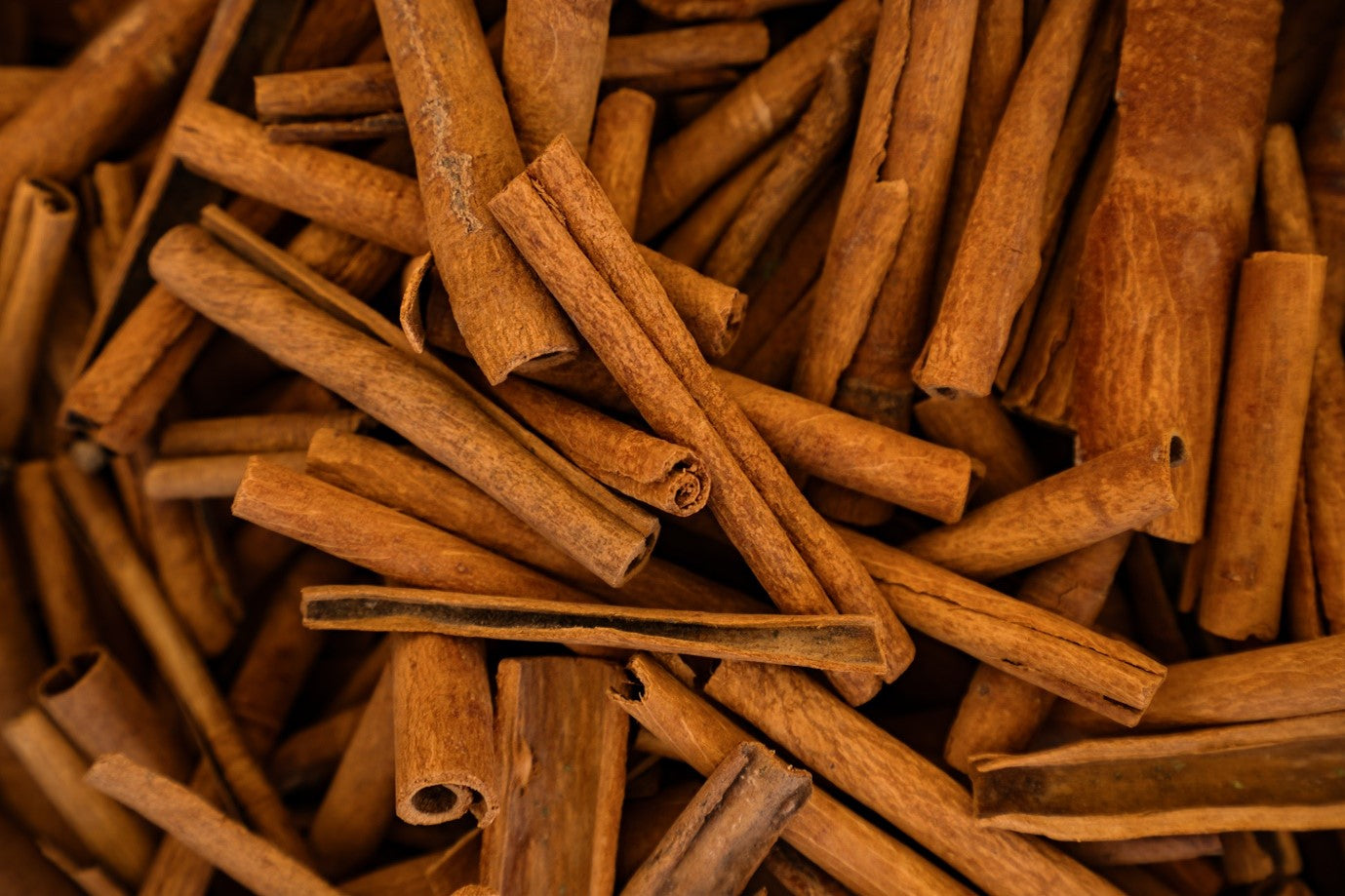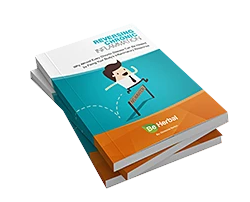If you have diabetes, it is most likely that your doctor has already put you on a regular medication plan. However, if you recently got a blood report indicating high blood sugar and your doctor will advise you to control your blood sugar levels through diet. And now you’re wondering how to reverse prediabetes.

Here’s a list of plants and herbs that can be used to enhance sugar metabolism and benefit people with prediabetic or even diabetic conditions.
1. Bitter Melon (Momordica Charantia)

Also called Momordica charantia, bitter melon is a remedial fruit. It has been long used by doctors, traditional Chinese, and Indian medicine for decades. Bitter gourd has been used as a food source and is often called Aampalaya, bitter melon, balsam pear, balsamina, or bitter gourd.
Widely known (also disliked) for its bitter taste, bitter melon is rich in vitamins A and C. It contains twice as much potassium as bananas.
Research has shown that bitter gourd can help manage symptoms of diabetes. Various parts of the bitter gourd plant have been used by many people to treat diabetes. It can be used as seeds, juice, vegetable pulp, as well as supplements to decrease sugar levels of blood.
It can also be consumed as a cooked meal, but you can opt for its supplements if you don’t like its bitter taste. Studies have reported that bitter gourd has the following benefits on your body:
- It has hypoglycemic (blood sugar reducing) properties
- Enhances uptake of glucose by cells.
- Promotes the release and efficacy of insulin in the body.
- Lowers total cholesterol levels in the body.
There isn’t sufficient supporting evidence for replacing bitter melon from insulin or medication for diabetes. However, it has proven to assist people suffering from prediabetic conditions tremendously.
As for diabetics, it can help reduce the dependency on prescription medication by improving the blood sugar levels. You should always consult your doctor before making any changes in your prescribed medicine doses.
2. Aloe Vera

Commonly known for its skin benefits, Aloe vera is a typical house plant. It is widely used to treat ailments like acne, burns, dry skin, etc. it is now being discovered that Aloe vera is benevolent for the skin and has multiple health benefits, including decelerating the advancement of type 2 diabetes.
A 2013 review found that using aloe vera has benefits in symptoms of diabetes in rats. It was shown that the beta cells of the pancreas that produce insulin could be protected and repaired by using aloe vera. The exact mechanism of this is not clear; however, it was believed that the reparative mechanism of aloe vera occurs due to its antioxidant properties. More research on the subject is warranted.
Aloe vera gel is sourced from the inner part of the leaves. Japanese research has also shown that Aloe vera gel contains compounds and phytochemicals, which have a beneficial property of managing blood sugar levels, hence supporting the claims of healing or reversing prediabetes naturally.
Aloe vera can be taken as:
- Fresh pulp is taken with or added to a drink, smoothie, or food
- Supplements in the form of tablets or capsules
Aloe vera oil is also used by people on the skin, but skincare products containing aloe vera should never be consumed orally.
3. Fenugreek (Trigonella Foenum-Graecum)

Fenugreek seeds, part of the legume family, are commonly used as mouth fresheners after meals or otherwise in the Eastern World. It is also known to have colossal health benefits due to its unique properties, including antibacterial, antiviral, and stomach-soothing effects.
It is often added to green tea for healing throat infections, but it also has shown great ability to lowering blood sugar levels. The seeds are rich in fiber and chemicals that decelerate the digestion of carbohydrates, delay gastric emptying, and inhibit glucose transport.
Evidence has shown that fenugreek seeds help prevent or postpone type 2 diabetes. A 3-year study published in 2015 reported that people with prediabetes who eat fenugreek seed powder are less likely to be diagnosed with type 2 diabetes later on in their lives.
This occurs because fenugreek seeds increase insulin levels in the body, keep sugar in control, and lower cholesterol levels. Besides being added to boiled water and consumed as a drink or tea, fenugreek seeds can also be added to dishes, ground into a powder form, and used as dietary supplements.
4. Garlic (Allium Sativum)
Also called Allium sativum, garlic is a bulbous perennial herb. Its height reaches up to 1.2 m (4 ft.), and its flowers are androgynous (sexless). The pungent odor of garlic comes from a sulfur-containing compound, Allicin.
Garlic is found to have substantial hypoglycemic activity, i.e., it lowers the blood levels of glucose. Research has shown that this property is observed due to the increased hepatic metabolism, elevated release of insulin from pancreatic beta cells that it produces.
The compound allicin, administered at a dosage of 200 mg/kg body weight significantly reduced:
- The concentration of serum lipids
- The amount of glucose in the blood
- Activities of various serum enzymes, including alkaline phosphatase.
- It also reported a significantly increased activity of liver and intestinal HMG CoA reductase liver hexokinase.
Various other studies have demonstrated the anti-diabetic activity of garlic extract on rats. Along with this, garlic has also proven to have excellent antimicrobial properties. Its anticancer potential has also been commended by medical experts and has exhibited promising cardioprotective potential.
5. Cinnamon (Cinnamomum)
Cinnamon is also one of the many popular edible spices used in numerous cuisines around the globe. It comes from the bark of a Cinnamomum tree, which has a very unique and refreshing fragrance. It is widely used as a flavoring ingredient in baked items, sweets, and other dishes.
Adding cinnamon to food can give a sweet taste to food without adding sugar. This makes it a popular ingredient in foods for diabetic and prediabetic patients, but it also provides other health benefits.
So how to reverse prediabetes using cinnamon? A 2010 review reported that using cinnamon can improve:
- Glucose levels in the blood
- Blood insulin levels and insulin sensitivity
- Fat and lipid concentration in the blood
- Antioxidant status in the body
- Blood pressure
- Body mass and weight maintenance
- Digestion
Another 2013 review established that regular use of cinnamon can reduce your fasting blood glucose levels, total cholesterol, and bad cholesterol (low-density lipoprotein, LDL), triglycerides, and fat in the blood.
It has also been found to stabilize good cholesterol (high-density lipoprotein, HDL) levels and insulin activity. However, there are some factors noted in the studies that affect the role of cinnamon in your body.
These include the type of cinnamon used (as it determines the quantity of active ingredients), the amount of cinnamon used, the patient’s body response to cinnamon, and any other medicines being taken simultaneously.
Cinnamon can be taken as:
- An ingredient in various cooked dishes and baked stuff
- A component added to teas.
- A supplement, e.g., Ceylon Cinnamon Formula
You can talk to your doctor about the amount and type of cinnamon to include in your dietary routine and if using the supplementary form is healthy for you.
6. Ginseng (Panax/Eleutherococcus)

Ginseng is a slow-growing persistent plant that belongs to the family of Araliaceae with fleshy roots. It has been widely used as a Chinese medicinal herb, which offers tremendous anti-diabetic effects. There are different varieties of ginseng based upon regions. These include:
- Asian or Korean ginseng (Panax ginsengA. Meyer)
- American ginseng (Panax quinquefolius L.)
- Russian or Siberian ginseng (Eleutherococcus senticosus Maximum).
A study has shown that Asian ginseng roots help decrease blood glucose levels. These roots boost insulin release from the pancreas and increase the number of insulin receptors in your body.
American ginseng has been found to decrease sugar levels after meals in both non-diabetic individuals and those with type 2 diabetes.
The active component of certain parts of the ginseng plant called syringin has shown a potentially decreasing effect on blood glucose levels 1 hour after intravenous injection of syringin in fasting rats.
It has been found that syringin potentiates the pancreas to enhance insulin release, which in turn decreases the plasma glucose levels.
Ginseng consists of steroid-like compounds known as ginsenosides. An anti-diabetic study reviewing ginseng has shown that these compounds have various effects on the hormonal levels and the central nervous system (CNS), including potential anti-diabetic effects. However, the mechanism of action is not still completely clear.
However, another study has shown that there is a risk of Ginseng abuse syndrome only in 14 out of 133 participants who used it daily on a long term basis. The symptoms of ginseng abuse syndrome include hypertension, sleeplessness, nervousness, skin eruptions, increased libido, and morning diarrhea. So, it is crucial to use ginseng in moderation.
Chinese herbalists have shown potential interest in ginseng being comparably effective as acupuncture.
7. Curry Leaves (Murraya Koenigii)

The curry tree, also called Murraya koenigii, belongs to the family Rutaceae. The leaves of the plant are used in many dishes and are commonly known as sweet neem or curry leaves.
Curry leaves are ideal for maintaining sugar levels in non-diabetic individuals and in reducing blood sugar levels in diabetics too. You can include these herbal leaves in your daily diet.
Research conducted on the mechanism of action of the anti-diabetic effects of curry leaf extract on diabetic rats demonstrated a hypoglycemic effect. It functions by increasing insulin secretion and augmentation of the process of glycogenesis.
The effectiveness of its extracts is regulated by the enzymes involved in sugar mobilization, such as glucokinase and glucose-6-phosphatase.
Murraya koenigii exhibits protective effects on damage caused to the pancreas, kidney, spleen, and liver by decreasing the oxidative stress and preserving pancreatic cell integrity.
8. Chamomile (Matricaria Chamomilla)
Chamomile is a plant that is generally known for its flavor in tea. It belongs to the Asteraceae family and has shown evidence of lowering blood sugar levels. This is why it slows down the progress of type 2 diabetes and averts some damage caused by high sugar levels in the blood.
There is evidence showing the reciprocating effects of chamomile hot water extract and its main components on hyperglycemia. It is also known to improve complications caused by diabetes mellitus.
The chamomile extract showed potent inhibition against enzyme aldose reductase (ALR2) and its constituents, significantly restricting sorbitol buildup in human erythrocyte cells.
Thereby, if you consume chamomile as a part of your daily routine in the form of tea or chamomile extract, it will help prevent the progression of hyperglycemia as well as diabetic complications.
9. Ginger
Another herb used around the world as traditional therapeutic medicine is ginger. It has immense health benefits in treating digestive conditions and inflammatory issues.
A 2015 review showed that ginger also holds remarkable benefits in treating diabetes. The study concluded that ginger had potential glucose-lowering effects but was not effective in lowering blood insulin levels.
This connotes that ginger may help reduce insulin resistance in the body for patients with type 2 diabetes. However, further research is recommended by scientists to ascertain the mechanism of action of ginger to bring this into effect.
Ginger can be taken in the form of:
- ginger powdered or chopped, added, and cooked with food
- brewed tea
- supplement as capsule
- ginger ale
10. Holy Basil (Ocimum Sanctum)
Locally known as Tulsi, Holy Basil is scientifically named as Ocimum sanctum. It is a tropical herb grown annually and grows up to 18 inches in height. This plant has a religious significance and also has significant medicinal benefits.
Also used in Ayurvedic medicine, evidence shows that tulsi has a beneficial effect on fasting blood sugar and postprandial blood sugar.
The juice of tulsi leaves has long been used for managing fever and diabetes. Its anti-spasmodic characteristics help to alleviate abdominal pain and help lower blood sugar levels to normal range.
Supplements like Golden Saffron Extract can also help reduce sugar cravings, boost stamina, and energy.
References:
- Ghorbani, Ahmad. (2013). Best Herbs for Managing Diabetes: A Review of Clinical Studies. Brazilian Journal of Pharmaceutical Sciences, 49(3), 413-422. https://doi.org/10.1590/S1984-82502013000300003
- Baby Joseph, D Jini. Antidiabetic Effects of Momordica Charantia (Bitter Melon) And Its Medicinal Potency. Asian Pacific Journal of Tropical Disease. 2013:3(2);93-102. https://doi.org/10.1016/S2222-1808(13)60052-3.
- Amira Mourad Hussein Abo-Youssef, Basim Anwar Shehata Messiha. Beneficial Effects of Aloe Vera In Treatment of Diabetes: Comparative In Vivo And In Vitro Studies. Bulletin of Faculty of Pharmacy, Cairo University. 2013:51(1):7-11. https://doi.org/10.1016/j.bfopcu.2012.03.002.
- Tanaka M, Misawa E, Ito Y, et al. Identification of Five Phytosterols From Aloe Vera Gel as Anti-Diabetic compounds. Biol Pharm Bull. 2006;29(7):1418-1422. doi:10.1248/bpb.29.14
- Vijayanand S (2015) Evaluation of Antidiabetic Activity of Murraya Koenigii On Alloxan Induced Diabetic Rats. Int J Pharm Sci Res 6: 1401-1405.
- Kato A, Minoshima Y, Yamamoto J, Adachi I, Watson AA, et al. (2008) Protective Effects of Dietary Chamomile Tea on Diabetic Complications. J Agric Food Chem 56: 8206-8211.
- Suanarunsawat T, Songsak T (2005) Anti-hyperglycaemic and anti-dyslipidaemic effect of dietary supplement of white Ocimum sanctum Linnean Before and After STZ-Induced Diabetes Mellitus. Int J Diabetes Metab 13: 18-23.
- Shane M, Whorter L (2001) Biological Complementary Therapies: A Focus on Botanical Products in Diabetes. Diabetes Spectrum 14: 199-208.


